
BEFORE THE DEPARTMENT OF JUSTICE
AND THE FEDERAL TRADE COMMISSION
DOCKET ID FTC-2022-0003
COMMENTS CONCERING THE U.S. AIRLINE INDUSTRY
RESPONSE TO “REQUEST FOR INFORMATION ON MERGER
ENFORCEMENT”
PREPARED BY WILLIAM J. MCGEE
ON BEHALF OF THE AMERICAN ECONOMIC LIBERTIES PROJECT
APRIL 2022
Overview
The American Economic Liberties Project (AELP) commends the
Antitrust Division of the U.S. Department of Justice (DOJ) and the U.S.
Federal Trade Commission (FTC) for seeking public comment on “how
the agencies can modernize enforcement of the antitrust laws
regarding mergers.”
1
We believe this effort is long overdue, and we
offer these comments in regard to the domestic airline industry,
which in recent decades has devolved into an ever-shrinking
oligopoly that offers diminished flight options throughout the
country, higher fares in markets not served by low-cost carriers,
incessant fees, and an overall degradation in customer service.
1
U.S. Department of Justice, U.S. Federal Trade Commission; “Request for Information on Merger
Enforcement”; January 18, 2022; (www.ftc.gov/news-events/news/press-releases/2022/01/federal-
trade-commission-justice-department-seek-strengthen-enforcement-against-illegal-mergers)

We also were heartened in July 2021 by President Biden’s Executive
Order on “Promoting Competition in the American Economy,”
particularly because this document specifically referenced the airline
industry. The EO cited “reduced competition” and its effects on
service, fees, and refunds.
2
It’s past time for the DOJ and the FTC to recognize and address the
pernicious effects of rubber-stamping merger after merger in the
airline sector. Three decades ago, there were 11 legacy network
airlines in the United States, whereas today more than 80% of the
domestic market is dominated by the “Big Three”—American Airlines,
Delta Air Lines, and United Airlines—alongside Southwest Airlines,
which increasingly is failing to operate as the low-fare leader it once
was. The series of mergers, acquisitions, and shutdowns that
eliminated US Airways, Continental Airlines, Northwest Airlines,
America West Airlines, Trans World Airlines, Pan American World
Airways, Midway Airlines, and Eastern Air Lines have harmed millions
of Americans. This has been compounded by the acquisitions of
dozens of smaller carriers in recent years, including Virgin America by
Alaska Airlines, AirTran Airways and American Trans Air by Southwest,
and a three-way consolidation between Republic Airways, Midwest
Airlines, and Frontier Airlines. Additionally, there have been multiple
mergers among regional airlines contracted to operate on behalf of
major airlines.
3
Such harm hasn’t been limited just to air travelers, but
also to communities affected by cessations of service, downsizing and
elimination of airport hubs, massive lay-offs, and the loss of corporate
headquarters that have damaged entire cities and even regions.
We remain concerned that the criteria used by the DOJ and other
government agencies to evaluate and approve airline mergers and
2
The White House; “Executive Order on Promoting Competition in the American Economy”; July
9, 2021; (www.whitehouse.gov/briefing-room/statements-releases/2021/07/09/fact-sheet-
executive-order-on-promoting-competition-in-the-american-economy/)
3
Airlines for America; “U.S. Airline Mergers and Acquisitions”; updated April 12, 2002;
(www.airlines.org/dataset/u-s-airline-mergers-and-acquisitions/)

acquisitions in recent years have fallen short in key ways, which we
detail below. However, the need to revamp the criteria is more critical
than ever; such measures are currently being put to the test by two
competing efforts to acquire ultra low cost carrier (ULCC) Spirit
Airlines. A bid was first announced by ULCC Frontier Airlines in
February, quickly followed by a higher bid from low cost carrier (LCC)
JetBlue Airways in April.
As AELP stated in March in a joint letter to the DOJ and the U.S.
Department of Transportation (DOT), co-signed by eight other
organizations, concerning the Frontier offer: “This merger will likely
lessen competition in the airline industry, and thus violates the
Clayton Act.”
4
The counter action by JetBlue is even more
problematic, given JetBlue’s larger command of the domestic market.
It is incumbent upon the DOJ and the FTC to recognize that the
consumer, labor, and societal harms caused by airline consolidation
are not always anticipated or captured by the existing narrow
methodologies. What follows are specific responses to key questions
posed in the Request for Information.
Purpose, Harms, and Scope
The Clayton Act’s purpose is to prevent mergers and acquisitions
whose effect “may be substantially to lessen competition, or to tend
to create a monopoly.”
5
Further, the Act’s language specifically
addresses “interlocking directorates,” described as “the same person
making business decisions for competing companies.” This raises two
critical issues in viewing the domestic airline industry:
4
American Economic Liberties Project, et al.; “Letter to Secretary Buttigieg and Assistant Attorney
General Kanter”; March 10, 2022; (www.economicliberties.us/wp-content/uploads/2022/03/Spirit-
Frontier-Letter-Final_3.10.pdf)
5
U.S. Federal Trade Commission; “The Antitrust Laws”; (www.ftc.gov/advice-
guidance/competition-guidance/guide-antitrust-laws/antitrust-laws)
* First, it must be recognized that the Big Three are in effect an
oligopoly; their actions on fare increases, fee introductions and
increases, products, customer policies, procedures, and service
enhancements are more often than not in lockstep. These three
airlines also
fail
to lower fares, lower or eliminate fees, or
introduce service enhancements in virtual lockstep.
* Second, it must also be recognized that Wall Street investors
are in effect violating the interlocking directorate clause by
denying start-up capital to new-entrant airlines that will disrupt
the marketplace, provide lower fares, and take market share
(and subsequently profits) from major airlines. The proof lies in
the 14-year dearth of new scheduled airline service in the
United States (see below), broken only because both Breeze
Airways and Avelo Airlines obtained outside financing for their
respective start-ups in 2021.
The Clayton Act’s concern that mergers “may” substantially lessen
competition is not in question; recent history has amply
demonstrated that it’s not a question of “may” but rather a question
of “when” instead. AELP believes that all airline mergers “lessen
competition” and this has already occurred—repeatedly and
exponentially—with each successive merger and acquisition that has
been approved in recent decades. This was particularly apparent
when the “Big Six” major network carriers became the Big Three with
the rapid, reactive, and defensive mergers of Delta and Northwest in
2008, United and Continental in 2010, and American and US Airways
in 2013.
Consider the harms already inflicted on consumers and communities
by the multi-tiered mergers that formed the current Big Three, viewed
through the prism of the contraction of route networks, particularly
the “fortress hubs” that generate the bulk of passenger traffic for
network hub-and-spoke airlines.

As consolidation expanded, major hubs were closed in St. Louis
(formerly TWA); Las Vegas (formerly America West); Boston, Nashville,
and Raleigh-Durham (American); Memphis (formerly Northwest);
Cincinnati (Delta); Cleveland (formerly Continental); Pittsburgh and
Dayton (formerly US Airways); and many other metropolitan areas
nationwide. A 2020 study by the DOT’s Office of Inspector General
(DOT-IG) stated: “For example, five medium-sized communities—
Cincinnati, which saw a 77.1% decline; Pittsburgh; Greensboro;
Cleveland; and Milwaukee—lost over half of their departures, often
resulting from an airline shifting the focus of its network away from
an airport after a merger.”
6
Many of these facilities were closed despite considerable public
investment via capital projects and tax breaks. In the case of the St.
Louis closure, American’s daily flights plunged from 200 to 36. In
2011, one journalist noted that mega-hubs continue to serve the
largest markets, “But smaller cities face a tougher future.” And the
economic effects on labor have been dramatic, including direct lay-
offs by airlines and aviation companies, as well as downsizing and
closures of regional offices by corporations requiring multiple flight
frequencies, nonstop routes, and jet service not outsourced to
regional aircraft. Additionally, the loss of a hub can deter other
corporations from opening new facilities in such regions. These
hardships urgently require further economic analysis, and they fit the
DOJ’s definition of “not the kind of question which is susceptible of a
ready and precise answer in most cases.”
7
6
U.S. Department of Transportation, Office of Inspector General; “Changes in Airline Service Differ
Significantly for Smaller Communities, but Limited Data on Ancillary Fees Hinders Further
Analysis”; May 27, 2020;
(www.oig.dot.gov/sites/default/files/Airline%20Service%20to%20Small%20Communities%20Final
%20Report_0.pdf)
7
Reynolds National Center for Business Journalism; “The Economic Toll on Former Airline Hubs”;
November 14, 2014; (businessjournalism.org/2014/11/the-economic-toll-on-former-airline-
hubs/); CNN.com; “Fewer Hubs Mean Fewer Options for Fliers”; May 16, 2011;
(www.cnn.com/2011/TRAVEL/05/16/fewer.airline.hubs/index.html)

Types and Sources of Evidence
AELP strongly believes the current guidelines’ framework has been
interpreted unduly narrowly by focusing on the predicted price
outcomes of mergers. The Big Three’s oligopoly has had deleterious
yet unexamined effects on the airline passenger experience. Simply
put, the nation’s major airlines no longer compete on customer
service or product enhancements for passengers in economy or
coach classes. And the degradation in airline service is made possible
by a lack of choice, particularly in the many regions of the country
where there are no ULCC or LCC options.
Consider the following:
• Aircraft seating has shrunk on all domestic fleets from the Big Three
to the ULCCs. In recent decades seat pitch (i.e. legroom) has
decreased, in some cases by 2” to 5”, and seat width has decreased by
up to 2”. Such squeezing is exacerbated by two conflicting trends.
First, airline passenger load factors are at all-time highs not seen
since World War II, with the virtual elimination of empty middle seats
between strangers on most flights. A Boeing engineer calculated an
unoccupied adjacent seat provides an addition 4.25” in width. Second,
in 2018 the Centers for Disease Control and Prevention confirmed
that average Americans have grown larger in recent decades. Those
higher load factors also have put the squeeze on redemption of
frequent flyer miles and points. Each successive merger worsens this
scenario, as twice the number of “elite” members are fighting for half
as many available seats.
8
8
USA Today, Bill McGee; “Think Airline Seats Have Gotten Smaller? They Have”; September 24,
2014; (www.usatoday.com/story/travel/columnist/mcgee/2014/09/24/airplane-reclining-seat-
pitch-width/16105491/); Centers for Disease Control and Prevention, National Center for Health
Statistics; “Mean Body Weight, Height, Waist Circumference, and Body Mass Index Among Adults:
United States, 1999-2000 Through 2015-2016”; December 20, 2018;
(www.cdc.gov/nchs/data/nhsr/nhsr122-508.pdf)

• Rather than introducing improvements to inflight service, in recent
years the Big Three have actually downgraded the experience by
introducing bare-bones “Basic Economy” service designed to
compete with the ULCCs. Unwitting consumers booking on American,
Delta, and United continually discover that Basic Economy can mean
even tighter seats, restrictions on carry-on baggage and early
boarding, and the inability to select seat assignments. It’s also been
documented that Basic Economy was designed as a low fare bait-
and-switch, since analysts note the Big Three actually discourage the
purchase in an effort to upsell to higher classes of service.
9
• The mistreatment of passengers and the indifference to customer
service by airlines that have cut costs and outsourced passenger
interfacing jobs has become the new normal, and no objective source
can argue that commercial flying has not degraded in the United
States over the last two decades. This phenomenon was spectacularly
highlighted in April 2017, when paying passenger Dr. David Dao was
beaten and then involuntarily dragged from an aircraft because
United Express oversold the flight. In a subsequent House
Transportation Committee hearing in May 2017, Consumer Reports
testified: “A lack of competition and consumer choice allows carriers
to disregard the interests and concerns of their passengers in ways
that would have been unthinkable when there were 12 or 10 or even
8 major airlines in the United States competing for customers.” The
proof that consumers were unable to “book away” from United came
a month later, when—despite persistent, high-profile condemnation
from Congress, major media, social media, and the American public—
United’s stock price actually rose.
10
9
Bloomberg, “Why Airlines Don’t Want You to Fly Basic Economy”; November 16, 2018;
(www.bloomberg.com/news/articles/2018-11-16/why-airlines-don-t-want-you-to-fly-basic-
economy)
10
Consumer Reports/Consumers Union; “Testimony of William J. McGee, Aviation Consultant,
Consumers Union, Before the House Committee on Transportation and Infrastructure”; May 2,
2017; (https://advocacy.consumerreports.org/wp-content/uploads/2017/05/Consumers-Union-

• By any unbiased measure, airline service has deteriorated. DOT
statistics on canceled flights have reached unprecedented levels in
the last year, and this has been exacerbated by extremely lengthy
average wait times to reach outsourced airline call centers. The DOT’s
monthly Air Travel Consumer Reports quantify the misery: There were
102,550 consumer complaints in 2020, the highest number on record
in the 35 years the DOT has tracked such data, and a 568.4% annual
increase. In 2021, complaints receded to 49,958, which was still an
increase of 225.9% over pre-Covid 2019.
11
• All domestic airlines—with only one exception—followed Spirit’s
nickel-and-diming lead in 2007 by charging for first checked bags.
Only Southwest does not charge for first and second checked bags.
With most “ancillary fees,” there is tremendous duplication in the U.S.
airline market.
12
• All domestic airlines—without exception—have operated in unison
by defying a Congressional mandate to avoid charging fees to
families with children under 13 to sit together inflight. Not one carrier
has attempted to differentiate itself by eliminating such fees.
13
• All domestic airlines—without exception—collectively withheld at
least $10 billion in flight refunds for passengers unable to fly during
McGee-05-02-2017-House-airline-hearing.pdf); United Airlines; “Historical Price Lookup”; Weeks
of May 8-June 8, 2017; (https://ir.united.com/investor-resources/historical-price-lookup)
11
U.S. Department of Transportation; “Air Travel Consumer Report: December 2020, Full Year
2020 Numbers”; February 25, 2021; (www.transportation.gov/briefing-room/air-travel-consumer-
report-december-2020-full-year-2020-numbers); U.S. Department of Transportation; “Air Travel
Consumer Report: December 2021, Full Year 2021 Numbers”; February 28, 2022;
(www.transportation.gov/briefing-room/air-travel-consumer-report-december-2021-full-year-
2021-numbers)
12
FareCompare.com; “History of Airline Fees: Bags, Food & More”; August 23, 2017;
(www.bloomberg.com/news/articles/2018-11-16/why-airlines-don-t-want-you-to-fly-basic-
economy)
13
Consumer Reports; “Consumer Reports Urges Airlines To Let Kids Sit With Parents Without
Extra Fees”; March 2, 2021; (https://advocacy.consumerreports.org/press_release/consumer-
reports-urges-major-airlines-to-let-kids-sit-with-parents-without-extra-fees/)
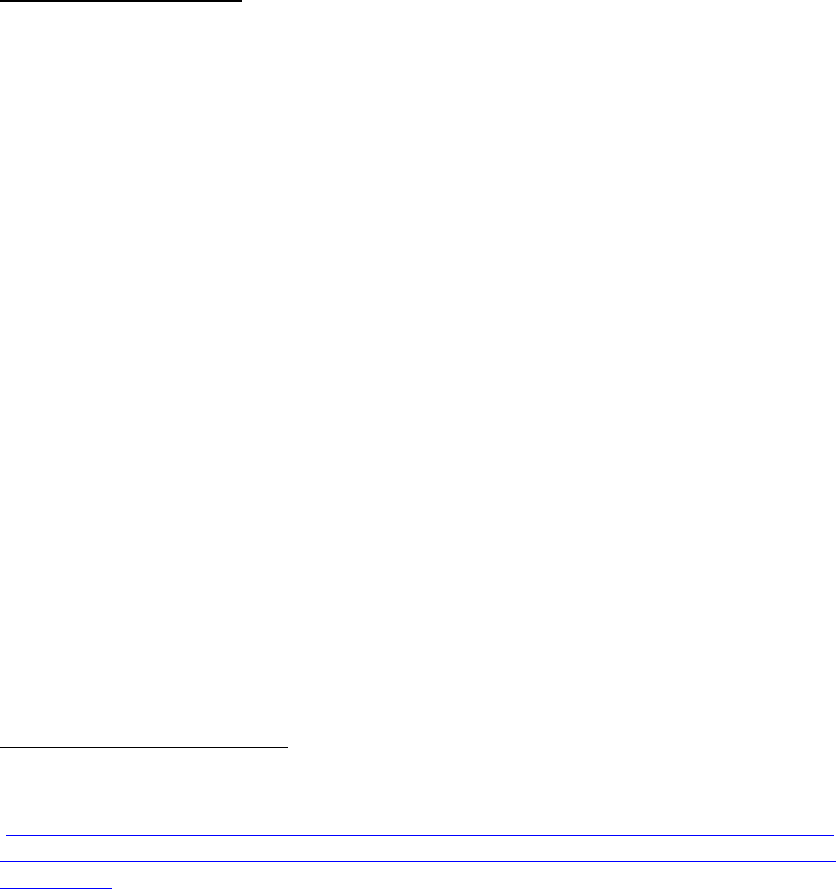
the Covid-19 pandemic in 2020 and 2021. Not one carrier stepped up
and defied industry behavior, even though millions of passengers
were restricted from flying by medical experts and international,
federal, state, and local restrictions. Airline indifference is apparent
not just with customers, but even with lawmakers. Sen. Ed Markey (D-
Mass.) “blasted” carriers for brazenly refusing to respond to
Congressional queries and stated: “Seven airlines accounting for more
than 70 percent of the domestic market have refused to individually
respond to our questions.”
14
Coordinated Effects
Competition and consumer advocates have long voiced apprehension
over the airline industry allegedly colluding on issues such as fixing
prices, introducing ancillary fees, and cutting travel agency
commissions. The “conscious parallelism” concerns raised in the
Request for Information are particularly acute with airlines, since their
schedules, fares, and fees are often shared by third-party ticket sellers
such as online travel agencies. (Note: This is
not
to suggest that there
are not independent, long-standing, and systemic issues with airline
pricing transparency, particularly in regard to the opaqueness of
many ancillary fees.)
However, proving such allegations has been difficult. For example, a
class action lawsuit filed against Delta and AirTran in 2009 charged
that they had colluded on baggage fees. The court dismissed the
case, but stated: “[U]nlawful conspiracies may be inferred when
collusive communications among competitors precede
14
Senator Ed Markey; “Senators Markey and Blumenthal Blast Airlines’ Inadequate Response to
Their Request to Eliminate Expiration Dates for All Pandemic-Related Flight Credits”; June 1, 2021;
(www.markey.senate.gov/news/press-releases/senators-markey-and-blumenthal-blast-airlines-
inadequate-response-to-their-request-to-eliminate-expiration-dates-for-all-pandemic-related-
flight-credits)
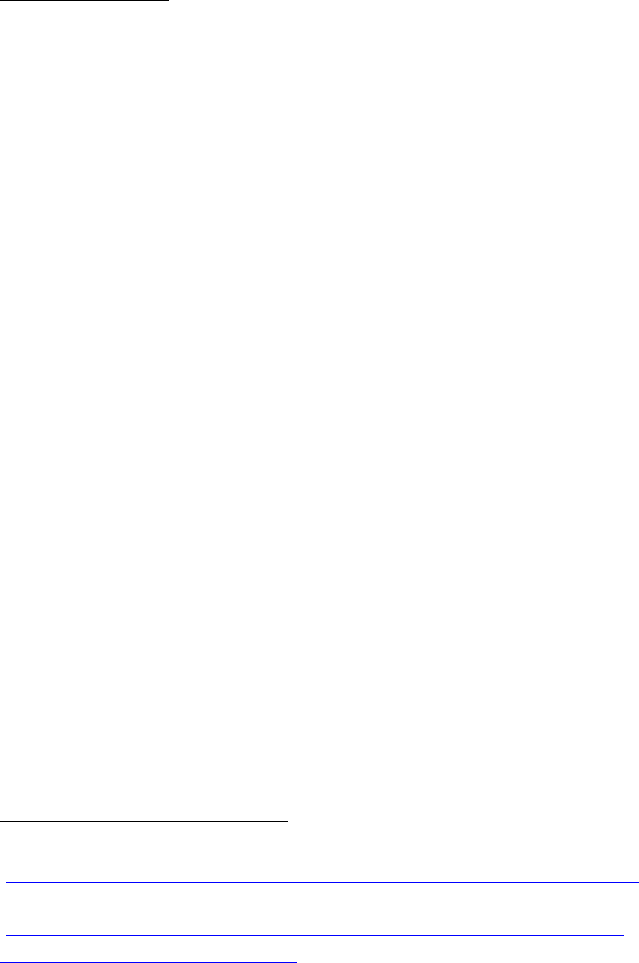
changed/responsive business practices, such as new pricing
practices.”
15
It’s imperative that such actions be thoroughly investigated,
particularly since airlines offer consumers one of the most complex
pricing models in the free market, with some 7 billion airfares
constantly changing daily.
Presumptions
As noted above, there has been an exponential factor at play in the
rapid corporate concentration of the U.S. airline industry. Each
subsequent merger has caused greater harm than the merger
preceding it, as the market has shrunk and the remaining players
have grown stronger. Yet conversely—and shockingly—government
approvals have become easier rather than harder.
This was made apparent in the five-year period between 2008 and
2013, when the Big Six devolved into the Big Three, each jockeying
for greater market share and the title of “largest airline in the world.”
Remarkably, after the Delta-Northwest merger in 2008, the executives
advocating for the United-Continental merger in 2010 and then the
American-US Airways merger in 2013 actually pointed to earlier
mergers as justification for increasing consolidation further.
As Chairman James Oberstar said to United and Continental
executives at a House Transportation Committee hearing in 2010:
“What we saw just recently was a further step in that consolidation,
when the previous Justice Department looked the other way, sort of
brushed aside my objections that approval of Delta and Northwest
15
McGill University, Institute of Air & Space Law; “Competition and the Antitrust Laws”; 2013;
(www.mcgill.ca/iasl/files/iasl/aspl614-competition_and_antitrust-laws.pdf); Atlanta Journal-
Constitution; “Judge Dismisses Lawsuit Over Airline Baggage Fees”; March 30, 2017;
(www.ajc.com/business/judge-dismisses-lawsuit-over-airline-baggage-
fees/BNwFA7MJXRGjjZ57egdnbL/)
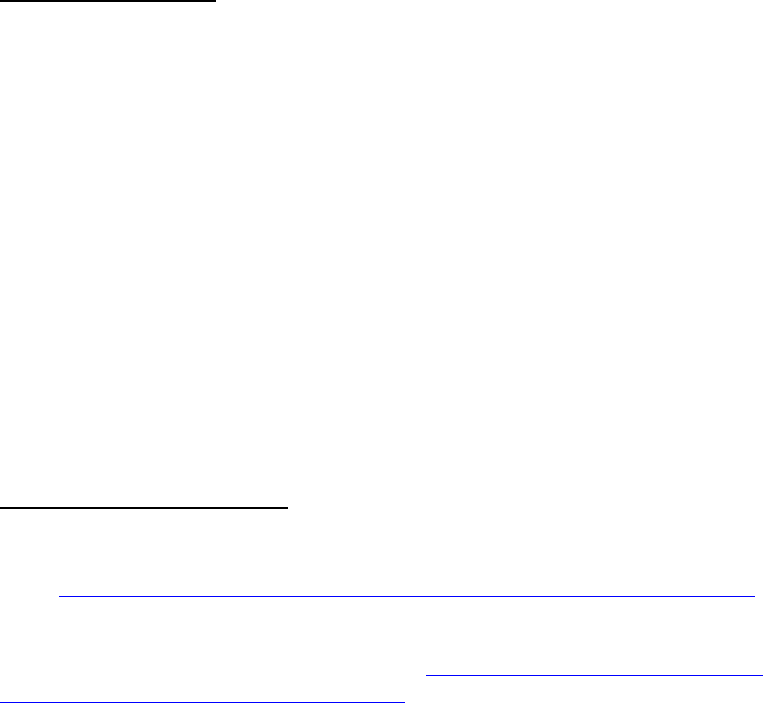
would result in a cascade of mergers. That has happened. You have
proposed one. You did not object to Delta-Northwest because you
were waiting in line with your own hat in hand.”
16
This can best be described as the legal argument offered by young
children who plead with their parents by pointing to their older
siblings: “But you let them do it so now you have to let me!”
Remarkably, this faulty argument worked for airlines. Indeed, in
testimony before the Senate Judiciary Committee, Douglas Parker—
then Chairman of US Airways and currently Chairman of American—
stated: “Although it will be the largest airline in the United States, the
new American Airlines will have less than 25% of domestic available
seat miles and will compete against the nationwide networks of Delta,
with 21% share; United, with 19%; and Southwest, with 19%.”
17
Market Definition
The Request for Information specifically references potential harm to
competition through means other than price increases, “but instead
from other longer-term of non-price factors such as a loss of
innovation, changes to product quality or variety, or creation of new
entry barriers.” The loss of innovation and changes to product quality
were addressed above. But the harm caused by new entry barriers is
tremendous, even though it remains one of the least examined side
effects of airline industry consolidation.
One of the primary tenets of the Airline Deregulation Act of 1978 was
that it would usher in more competition and more new-entrant
airlines that would compete on service and fares, thus benefiting
16
U.S. House of Representatives, Committee on Transportation and Infrastructure; Hearing on
“The Proposed United-Continental Merger: Potential Effects for Consumers and Industry”; June 16,
2010; (www.congress.gov/event/111th-congress/house-event/LC6802/text?s=1&r=13)
17
U.S. Senate, Committee on the Judiciary, Subcommittee on Antitrust, Competition Policy and
Consumer Rights; Hearing on “The American Airlines/US Airways Merger: Consolidation,
Competition, and Consumers”; March 19, 2013; (www.govinfo.gov/content/pkg/CHRG-
113shrg98440/html/CHRG-113shrg98440.htm)
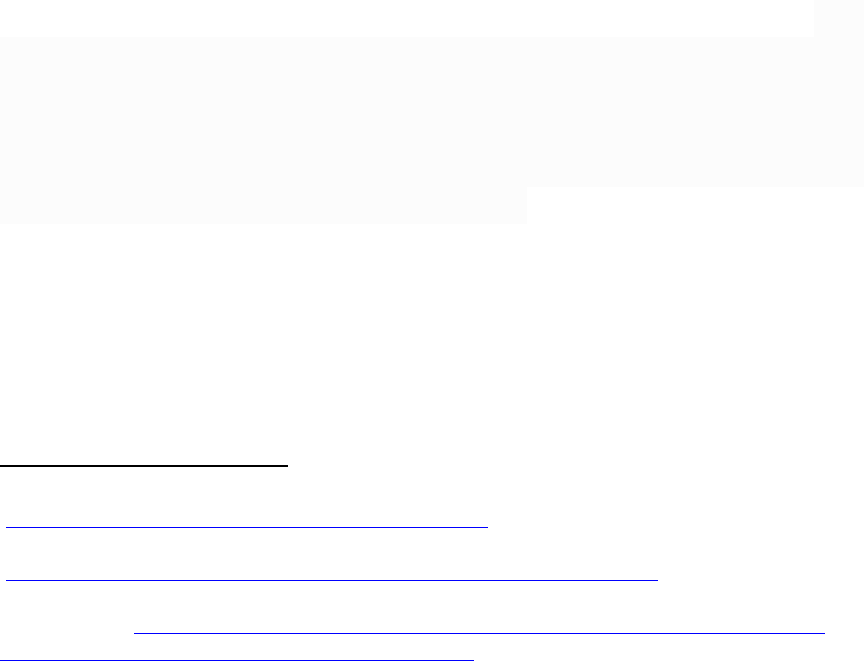
American air travelers and communities nationwide. This is clearly
stated in the opening paragraph of the Act’s conference report,
directing the Civil Aeronautics Board to consider “the encouragement
of entry into air transportation markets by new air carriers.”
18
For a short time in the 1980s, that pledge was fulfilled. But there has
been a steady decline for more than three decades now, even among
smaller, non-scheduled, and air taxi carriers; there were 96
commercial air carriers in 1995, and that number fell to 61 in 2021.
19
Subsequently, competition has been stifled and consumers have
suffered. The architects of airline deregulation would be horrified to
realize there are fewer domestic carriers in 2022 than in 1978.
Furthermore, between 2007 and 2021 there was not a single new-
entrant scheduled passenger airline launched in the U.S., the longest
stretch since the industry was founded in 1914, including during the
regulated era. Both Breeze and Avelo began flying in 2021 amid pent-
up demand due to Covid-19. Former Spirit CEO Ben Baldanza—the
inventor of airline ancillary fees in the United States—stated: “In a
strong economy, big airlines are good at putting pressure on new
carriers by both lowering their prices and adding capacity. But in the
current environment, especially after taking a lot of taxpayer money,
the largest U.S. airlines will have to be more careful about how hard
they try to snuff out these two new airlines.”
20
Ironically, the barriers to entry that the framers of deregulation
sought to erase have been replaced by even higher barriers to entry
in 2022—only now they are erected by the market, not by the federal
government. This is because while the DOJ and other government
agencies carefully scrutinize
how
domestic airlines spend capital, not
18
U.S. Congress; “S.2493, Airline Deregulation Act”; October 24, 1978;
(www.congress.gov/bill/95th-congress/senate-bill/2493)
19
Statista.com; “Number of Air Carriers in the United States from 1995 to 2021”; March 28, 2022;
(www.statista.com/statistics/183428/number-of-us-air-carriers-since-1995/)
20
Forbes.com; Ben Baldanza; “What the New Airlines Avelo and Breeze Mean for U.S. Aviation”;
May 21, 2021; (www.forbes.com/sites/benbaldanza/2021/05/21/what-two-new-airlines-avelo-
and-breeze-mean-for-us-aviation/?sh=31510c9323ba)

enough attention is paid to
where
such capital is derived. The plain
truth is that major financial investors own numerous shares in airlines
that ostensibly compete with each other. This leads to two irrefutable
conclusions:
* Investors don’t want major airlines to compete with each
other, particularly when it involves cutting fares.
* Investors don’t want major airlines to be challenged by new-
entrant carriers, especially ULCCs and LCCs, which undoubtedly
will drive down fares for consumers—and therefore drive down
profits for Wall Street.
No less a figure than Warren Buffet, Chairman of Berkshire Hathaway,
reversed himself on airline investing in 2016. Many years earlier he
had lost a large sum in airline shares and famously commented on
the Wright Brothers: “Indeed, if a farsighted capitalist had been
present at Kitty Hawk, he would have done his successors a huge
favor by shooting Orville down.” So what happened to change his
mind about investing in an airline? Actually, he decided to invest in
not one, not two, not three, but
all
of the four largest airlines in
America—American, Delta, Southwest, and United.
21
Furthermore, Wall Street investors punish airlines for pro-consumer
initiatives. Take the case of Southwest, the only carrier in the nation
not charging fees for first and second checked bags, as well as ticket
changes. In 2014, JetBlue was the penultimate carrier in the country
not charging fees for first checked bags, but it succumbed to pressure
from investors, leaving Southwest the lone holdout on bag fees. As
Tim Wu noted shortly after in “Why Airlines Want to Make You Suffer”
in The New Yorker: “Wall Street analysts, however, accused JetBlue of
being ‘overly brand-conscious and customer-focused.’”
22
Analysis of
industry consolidation is ineffective if it does not take into account
21
CNBC; “Buffett’s Berkshire Takes Stake in Four Major Airlines”; November 14, 2016;
(www.cnbc.com/2016/11/14/buffetts-berkshire-takes-stakes-in-four-major-airlines.html)
22
The New Yorker; Tim Wu; “Why Airlines Want to Make You Suffer”; December 26, 2014;
(www.newyorker.com/business/currency/airlines-want-you-to-suffer)

the unbearable pressure of those providing the operating capital,
while also recognizing that the interests of investors are diametrically
opposed to the best interests of the very customers that this
customer service industry is theoretically serving.
Wall Street also punishes airlines for pro-labor actions. When
American gave its workforce a raise in 2017—primarily to achieve
parity with Delta and United employees—investors immediately
devalued American’s stock, and made it clear this was unacceptable
behavior. JPMorgan airline analyst Jamie Baker stated: “We are
troubled by AAL’s wealth transfer of nearly $1 billion to its labor
groups…American’s agreement with its labor stakeholders establishes
a worrying precedent, in our view, both for American and the
industry.” Left out of this narrow equation is that airline wage
increases might actually 1) improve service and the customer
experience for paying passengers and 2) help stimulate the national
economy so that more middle class workers can pay for discretionary
items such as…air travel.
23
That said, even if securing capital was not an issue, there are still
many other competitive barriers to entry for new airlines, especially as
consolidation has strengthened the majors. As Dr. Diana Moss,
President of the American Antirust Institute, told the Senate in
reference to airline mergers in 2013: “Rather the relevant
consideration is whether existing participants in the industry find it
more difficult with higher concentration and hub dominance to
access the inputs (e.g., hubs, slots, gates, etc.) needed to enter and
compete on airport-pair or city-pair routes that are adversely affected
by the US Airways-American merger.”
24
23
Vox; “American Airlines Gave its Workers a Raise; Wall Street Freaked Out”; April 29, 2017;
(www.vox.com/new-money/2017/4/29/15471634/american-airlines-raise)
24
U.S. Senate, Committee on the Judiciary, Subcommittee on Antitrust, Competition Policy and
Consumer Rights; Follow-up Questions on “The American Airlines/US Airways Merger:
Consolidation, Competition, and Consumers”; March 19, 2013;
(www.judiciary.senate.gov/imo/media/doc/031913QFRs-Moss.pdf)
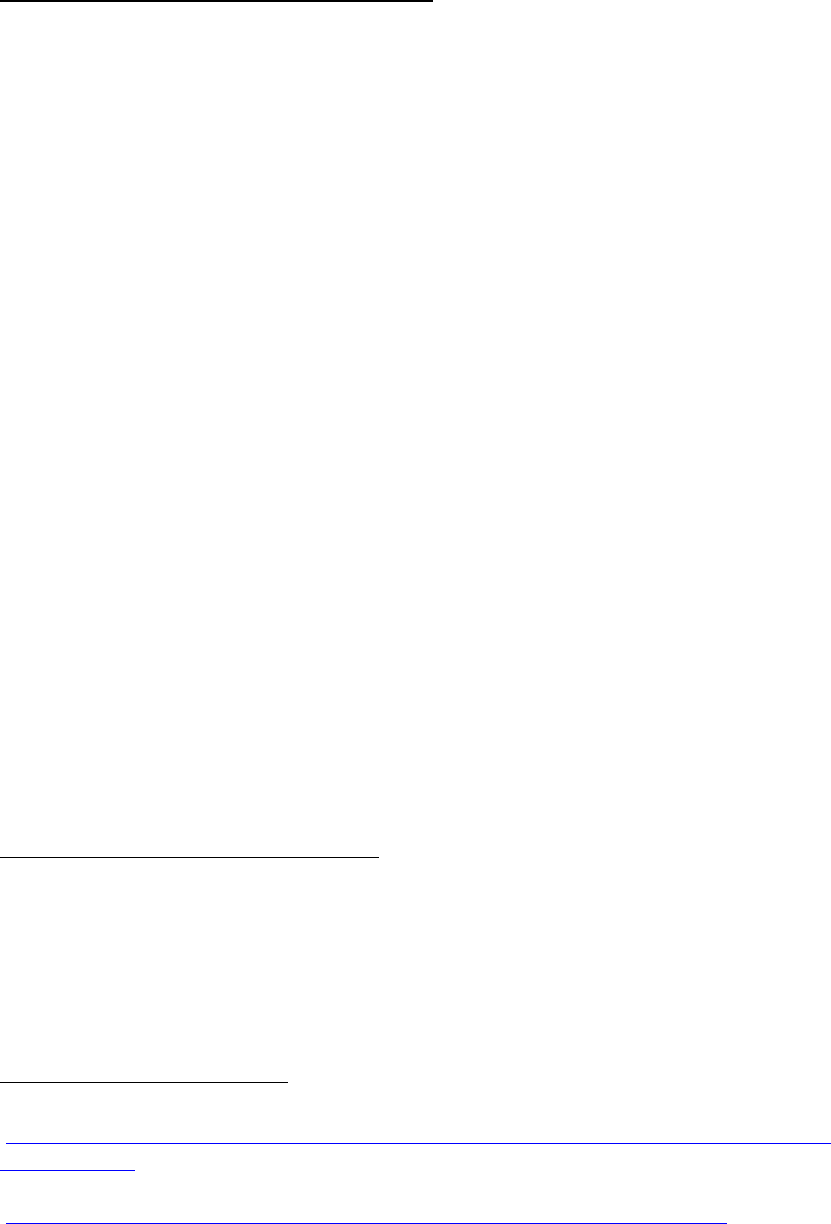
Potential and Nascent Competition
The issue of a “nascent competitor” evolving into a “competitive
force” is particularly relevant in light of the announced merger bids
for Spirit by Frontier and JetBlue. Frontier’s analysis repeatedly states
that a combined Frontier-Spirit will “deliver $1 billion in annual
consumer savings” to passengers.
25
Even if the math here is correct—
a
very
big “if”—it’s absurd to assume that any cost cutting from this
merger would flow unimpeded to consumers. The only beneficiaries
of airline mergers are executives and investors.
Furthermore, Frontier asserts that merging with Spirit will “deliver
even more reliable service.” Given their record number of flight
cancellations and consumer complaints recently, this claim is
laughable. In the latest DOT Air Travel Consumer Report for March
2022, among the 17 U.S. carriers ranked on consumer complaints, the
nation’s three ULCCs finished dead last—Spirit at 15
th
, Allegiant at
16
th
, and Frontier at 17
th
.
26
It’s imperative that the DOJ and the FTC fully analyze and estimate
not only the untapped potential due to mergers, but also the bogus
and inflated claims of unrealistic potential benefits due to mergers.
Special Characteristics Markets
There are two key questions raised here, the first concerning past
mergers and the second concerning price discrimination.
25
Frontier Airlines; “Everyone Wins With Even More Ultra-Low Fares”; February 2022;
(https://evenmoreultralowfares.com/wp-content/uploads/2022/02/Frontier-Spirit-Transaction-
Infographic.pdf)
26
U.S. Department of Transportation; “Air Travel Consumer Report”; March 2022;
(www.transportation.gov/sites/dot.gov/files/2022-04/March%202022%20ATCR.pdf)

• Past mergers. The question about “consummated mergers” and
“post-merger evidence” is absolutely critical, and AELP is grateful that
the DOJ and the FTC are considering this issue. As our comments
have made clear, the path toward unsustainable airline industry
consolidation has been strewn with inflated estimates, half-truths, and
broken promises.
AELP strongly urges the DOJ and the FTC to place a moratorium on
all future airline mergers and acquisitions until a thorough
examination has been conducted of the mergers that have taken
place since 2001, particularly the “mega-mergers” that consolidated
the Big Six into the Big Three—Delta-Northwest, United-Continental,
and American-US Airways. The author of these comments testified
multiple times in both the House and the Senate against these
mergers, and witnessed first-hand how airline executives offered
vague answers, and even vaguer promises, to direct questions about
cutting service, laying off employees, closing hubs, and raising fares.
• Price discrimination. The airline pricing model is broken in the
United States. First, there is the opacity and confusion of the booking
process, as consumers struggle to obtain bottom-line fares inclusive
of both mandatory and “optional” ancillary fees. Second, there is the
cost of flying itself.
Airlines and their lobbyists repeatedly assert that airfares are falling.
As Airlines for America often asserts, “average domestic round-trip
airfares” are lower now when adjusted for inflation.
27
This conclusion
obscures two key factors:
* Comparisons of base fares from years past fail to account for
the many ancillary fees that airlines have “unbundled” from
ticket prices, so apples-to-apples comparisons are nearly
impossible for consumers to calculate.
27
Airlines for America; Data & Statistics; “Domestic Round-Trip Fares and Fees”; April 9, 2020;
(www.airlines.org/dataset/annual-round-trip-fares-and-fees-domestic/)

* The key word in “average airfares” is
average
. In fact, the
differential in average fares across the United States is
considerable.
Since 1996, the DOT has published the quarterly Domestic Airline
Fares Consumer Report.
28
The report details actual fares paid in the
1,000 largest domestic city-pair markets, roughly half of all domestic
passenger traffic. For years now these reports have demonstrated not
only the complexity of airline pricing, but the broad range between
lowest and highest fares.
Consider the most recent report, detailing the 3Q of 2021. The
fluctuations in fares paid by passengers on the same route can be
considerable. Between Atlanta and Charlotte, 52% of passengers on
Delta paid more than three times the minimum fare. Between
Washington, DC and Huntsville, it was 42% of passengers on United.
Between Salt Lake City and Spokane, it was 35% of passengers on
Delta. Between Chicago and Greenville, it was 23% on United.
29
Few
other industries offer such wide pricing disparities for identical
products.
Then there are the effects of how competition—as well as a virtual
lack
of competition—affects airfares. The same 3Q 2021 report also
highlights the largest year-over-year price increases and decreases on
routes throughout the country. Not surprisingly, the highest price
gouging occurred between cities not served by LCCs and/or ULCCs
last year. The worst case was Milwaukee-New York, a route where
28
U.S. Department of Transportation; Domestic Airline Fares Consumer Report; 1996-2021;
(www.transportation.gov/office-policy/aviation-policy/domestic-airline-consumer-airfare-report-
pdf)
29
U.S. Department of Transportation; Domestic Airline Fares Consumer Report; Third Quarter
2021; (www.transportation.gov/sites/dot.gov/files/2022-
01/Domestic%20Airline%20Fares%20Consumer%20Report%202021_Q3.pdf)

average fares rose 482%, prior to LCC JetBlue entering this year.
30
And
conversely, the largest decrease occurred between Santa Barbara and
Las Vegas, which in 3Q 2021 saw average fares fall by a whopping
41,640%! Why? Because in April 2021 LCC Southwest launched the
first nonstop flights on this route.
31
As the DOT reports prove every single quarter, it simply cannot be
overstated how critical the effects of ULCCs and LCCs are on pricing.
A 2016 MIT study asserted a ULCC presence reduces base airfares by
21% by all airlines serving that route, and an LCC presence reduces all
fares by 8%.
32
The unarguable fact is that the Big Three hike fares
when there is no ULCC or LCC head-to-head competition, and lower
fares when there is such competition. This is yet another malevolent
effect of airline consolidation, particularly when the Big Six merged
into the Big Three. The odds of a major carrier introducing lower
fares—as they once did when there were more major airlines and
therefore competition was much more spirited—have disappeared
through these mergers.
This was documented by the U.S. Government Accountability Office in
2013: “At the same time, capacity reductions in certain markets from a
merger or acquisition could also serve to generate additional revenue
through increased fares on some routes. Some studies of airline
mergers and acquisitions during the 1980s showed that prices were
30
Milwaukee Business Journal; “JetBlue Airways Will Begin Milwaukee Service March 27”; February
2, 2022; (www.bizjournals.com/milwaukee/news/2022/02/02/jetblue-airways-will-begin-
milwaukee-service-march.html)
31
Visit Santa Barbara; “New Southwest Airlines Flights to Santa Barbara Take Off in April 2021”;
January 21, 2021; (https://santabarbaraca.com/press_releases/new-southwest-airlines-flights-to-
santa-barbara-take-off-in-april-2021/)
32
Massachusetts Institute of Technology; “The Emergence and Effects of the Ultra-Low Cost
Carrier (ULCC) Business Model in the U.S. Airline Industry”; October 17, 2016;
(https://dspace.mit.edu/bitstream/handle/1721.1/104869/ulcc-paper-draft-
revFINAL.pdf;jsessionid=B0775022ED165FAFDF3A9F0809460539?sequence=1)

higher on some routes from the airline’s hubs soon after the
combination was completed.”
33
Conclusion
At one time more than a decade ago, many competition and
consumer advocates warned Congress and the DOJ that the U.S.
airline industry was quickly approaching “Too Big To Fail” status. That
day has already arrived, as witnessed by the government assistance
and bailouts the industry requested from Congress and received from
taxpayers in the wake of the 9/11 terror attacks, economic and fuel
crises, and the Covid-19 pandemic.
Taxpayer relief was not even in question in 2020. The only question
was how much, which turned out to be a record $54 billion. Yet
despite only one caveat—maintain staffing levels throughout the
pandemic—several domestic airlines defiantly trimmed staff, while
refusing to provide customer refunds despite DOT guidance
and
canceling thousands of flights due to staffing shortages.
34
The
airlines’ open insolence of consumers, Congress, and the DOT is in
large measure the result of uncontrolled industry consolidation.
We urge the DOJ and the FTC to consider and act upon the issues
AELP has raised above. And we urge these agencies to strengthen the
merger enforcement and policy guidance that previously allowed
such consolidation to take hold. We thank you for your consideration.
—William J. McGee
On Behalf of the American Economic Liberties Project
18 April 2022
33
U.S. Government Accountability Office; “Airline Mergers: Issues Raised by the Proposed Merger
of American Airlines and US Airways”; June 19, 2013; (www.gao.gov/assets/gao-13-403t.pdf)
34
Washington Post; “Taxpayers Spent Billions Bailing Out Airlines; Did the Industry Hold Up its
End of the Deal?”; December 14, 2021;
(www.washingtonpost.com/transportation/2021/12/14/airline-bailout-covid-flights/)
